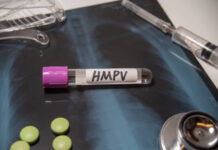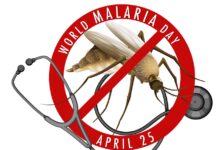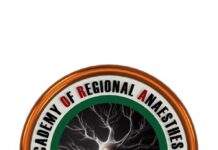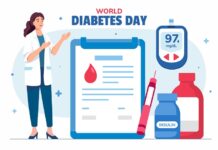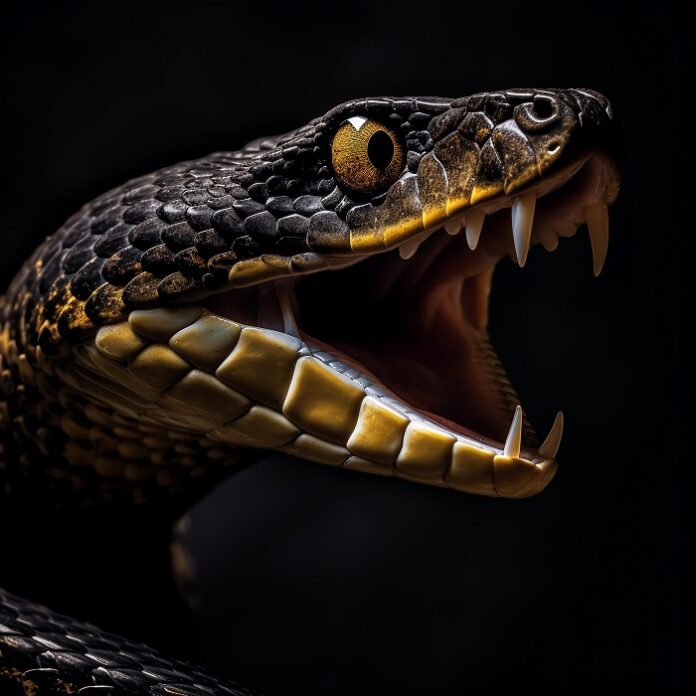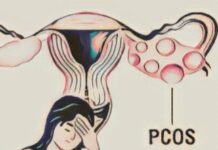Snake Bite – Current Management Perspective and Brief Review
Dr. Felin Ann Francis, Dr. Nivedita Moulick, Dr. Harshit Thole
Abstract
A snake bite is an acute life-threatening and time-limiting medical emergency. It is a preventable health hazard often faced by rural populations in tropical and sub-tropical countries with heavy rainfall and humid climate. In India, snake bite is included in a list of neglected tropical diseases. With its triad of high mortality, high disability, and substantial psychological morbidity, snake bite warrants high-priority research.The number of snake bite deaths is greatest in the states of Uttar Pradesh, Andhra Pradesh, and Bihar, and snake bites are more common in rural communities. Currently, treatment quality is highly varied, ranging from good quality in some areas, to very poor quality in other areas.Our article aims to sensitize clinicians regarding different types of snake bite, their clinical features, and the use of anti-snakebite venom (ASV), for better patient management and improved prognosis.
Keywords: Snakebite, Diagnosis, ASV, Treatment.
Introduction
Worldwide, snake bites contribute to as many as 1.8 million envenomations and 94,000 deaths every year.[1] In India, there are about 45,900 snake bite deaths every year (annual age-standardized rate of 4.1/100,000).[2]
There are more than 2000 species of snakes in the world. About 300 species are found in India, out of which 52 are venomous. The venomous snakes found in India belong to 3 families- Elapidae, Viperidae, and Hydrophinae (Sea Snakes). The most common Indian Elapids are Najanaja (Indian Cobra), Bungarus caeruleus (Indian Krait), Daboia russalie (Russell’s Viper), and Echiscariatus (Saw scaled viper).[3]
Kraits are active during night hours, often biting a person sleeping on the floor bed. Maximum Viper and Cobra bites occur during the day or early darkness while watering the plantation or walking barefoot in grown grass or soybean crops.
Victims are not only misdiagnosed as abdominal colic and vomiting due to indigestion, appendicitis,stroke, head injury, ischemic heart disease, food poisoning, trismus, hysteria, and Guillain barre syndrome (GBS)but also subjected to unnecessary investigations including MRI scans of the brain and lumbar puncture (LP), thus causing undue delay in Anti Snake Venomtherapy (ASV). Delayed administration of ASV or waiting until the victim develops systemic manifestation i.e., a 6-hour results in systemic envenoming and high fatality.[4]
Clinical Features
Clinical presentation of snake bite victim depends upon- the species of snake, the amount of venom
1Assistant Professor Department of General Medicine, D Y Patil Medical College, Nerul, Navi Mumbai.
2 Professor & HOD Department of General Medicine, D Y Patil Medical College, Nerul, Navi Mumbai.
3Assistant Professor Department of General Medicine, D Y Patil Medical College, Nerul, Navi Mumbai.
Corresponding Author: Dr. Felin Ann Francis, Assistant Professor Department of General Medicine, D Y Patil MedicalCollege, Nerul, Navi Mumbai. Email: felinfrancis18@gmail.com
injected, the season of bite, whether the snake is fed or unfed, the site of the bite, the area covered or uncovered, dry or incomplete bite, multiple bites, the weight of the victim, time elapsed between bite and administration of ASV. Venom concentration and constitution depend on environmental conditions as well as the snake’s maturity and darkness of colour of skin.[5,6] Patients attimes present with non-specific symptoms related to anxiety. Common symptoms in these patients are palpitations, sweating, tremulousness, tachycardia, tachypnoea, elevated blood pressure, cold extremities, and paraesthesia (pins and needles pricking sensation of extremities). These patients may have dilated pupils suggestive of sympathetic overactivity. Others may develop vasovagal shock (faintness and collapse with profound slowing of the heart) after the bite or suspected bite.
Patients can present in 4 clinical syndromes or combinations i.e., progressive weakness (neuroparalytic /neurotoxic), bleeding(vasculogenic/haemotoxic), myotoxic, and painful progressive swelling.
Dry bite-bites by non-venomous snakes are common and bites by venomous species are not always accompanied by injection of venom (dry bites). The percentage of dry bites ranges from 10-80% for various venomous snakes.
Local swelling, bleeding, blistering, and necrosis suggest Cobra bite. Minimum local changes indicate Krait bite. Local bleeding suggests Nilgiri Russel’s viper. Pain in the abdomen and hyperperistalsis indicates a Krait bite. Even in the case of a dry bite, symptoms due to anxiety and sympathetic over-activity may be present. As symptoms associated with panic or stress sometimes mimic early envenoming symptoms, clinicians may have difficulty in determining whether envenoming occurred or not.
Neuroparalytic (Progressive weakness; Elapid envenomation) Neuroparalytic snakebite patients present with typical symptoms within 30 min– 6 hours in case of a Cobra bite. Many species, particularly the Krait and the humpnosed pit viper are known for delayed appearance of symptoms which can develop after 6–12 hours;however, ptosis in Krait bite has been recorded as late as 36 hours after hospitalization. Chronological order of appearance of symptoms – furrowing of forehead, Ptosis (drooping of eyelids) occurs first, followed by Diplopia (double vision), Dysarthria (speech difficulty), then Dysphonia (pitch of voice becomes less)followed by Dyspnoea (breathlessness) and Dysphagia (Inability to swallow) occurs. All these symptoms are related to 3rd, 4th, 6th, and lower cranial nerve paralysis. Finally, paralysis of intercostal and skeletal muscles occurs in descending manner-Descending palsy.
To identify impending respiratory failure, bedside lung function tests in adults –
i. Single breath count – number of digits counted in one exhalation – normal >30
ii. Breath holding time – breath held in inspiration – normal > 45 sec
iii. Ability to complete one sentence in one breath.
Cry in a child whether loud or husky can help in identifying impending respiratory failure.
Locked-in syndrome (LIS) is defined as quadriplegia and anarthria with preserved consciousness. Patients retain vertical eye movement, facilitating non-verbal communication. In completeLIS patients cannot communicate in any form. Central LIS is seen commonly due to lesions in the ventral pons [7,8,9]. Peripheral LIS usually occurs in Elapidae bites, especially Krait bites and hence increasing one’s suspicion rate is important as they can be referred to a centre with ventilator support.
Occult snakebite: Krait bites victims often present in the early morning with paralysis with no local signs with no bite marks. Snakebite victim gets up in the morning with severe epigastric/umbilical pain with vomiting persisting for 3 – 4 hours and followed by typical neuroparalytic symptoms within the next 4- 6 hours. There is no history of snakebite. Unexplained respiratory distress in children in the presence of ptosis or sudden onset of acute flaccid paralysis in a child (locked-in syndrome) is a highly suspicious symptom in endemic areas, particularly of Krait bite envenomation.
Vasculotoxic / Hematotoxic / Bleeding
Vasculotoxic bites are due to Viper species. They can have local manifestations as well as systemic manifestations.
Local manifestations: These are more prominent in Russel’s viper bite followed by Saw scaled viper and least in Pit viper bite. Local manifestations are in the form of: – Local swelling, bleeding, blistering, and necrosis. Pain at the bite site and severe swelling leading to compartment syndrome. Pain on passive movement. The absence of peripheral pulses and hypoesthesia over the fuels of nerve passing through the compartment helps to diagnose compartment syndrome. Tender enlargement of the local draining lymph node.Visible systemic bleeding from the action of haemorrhagese.g.gingival bleeding, epistaxis, ecchymotic patches, vomiting, hematemesis, hemoptysis, bleeding per rectum, subconjunctival haemorrhages, continuous bleeding from the bite site, bleeding from pre-existing conditions e.g.,haemorrhoids, bleeding from freshly healed wounds. Acute abdominal tenderness may suggest gastrointestinal or retroperitoneal bleeding. Lateralizing neurological symptoms such as asymmetrical pupils may be indicative of intracranial bleeding. Consumption coagulopathy detectable by 20 minutes whole blood clottingtime (20 WBCT) develops as early as within 30 minutes from the time of bite but may be delayed.
Some species e.g., Russell’s viper frequently cause acute Kidney Injury. The patient presents with bilateral renal angle tenderness, albuminuria, hematuria, hemoglobinuria, and myoglobinuria followed by oliguria and anuria with acute kidney injury (AKI)
Manifestations like parotid swelling, conjunctival chemosis, myalgia, thirst and systemic hypotension observed in patients of Daboia russelii bite indicate capillary leak syndrome. It is seen more commonly in males as compared to females. Hemoconcentration, increased HCT, leukocytosis, and pleural effusion are early laboratory and radiological markers of capillary leak syndrome and should alert the clinician to seek urgent interventions in Daboia russelii bite.
Myotoxic
This presentation is common in Sea snakebite. The patient presents with Muscle aches, muscle swelling, and involuntary contractions of muscles. Passage of dark brown urine. Compartment syndrome, cardiac arrhythmias due tohyperkalemia, acute kidney injury due to myoglobinuria, and subtle neuroparalytic signs.
Check the history of snakebite and look for obvious evidence of a bite (fang puncture marks, bleeding, swelling of the bitten part etc.). However, ina krait bite(Neuroparalytic snakebite)no local marks may be seen. It can be noted by magnifying the lens as a pinhead bleeding spot with a surrounding rash.
Examine the bite site and look for fang marks or any signs of local envenomation. Fang mark or their patterns have no role to determine whether the biting species was venomous or non-venomous or the amount of venom injected, the severity of systemic poisoning and the nature of poisoning – Elapidae or Viperidae venom etc. Some species like Krait may leave no bite marks.
Investigations
Bedside 20 WBCT: If the blood is solid i.e., has clotted the patient has passed thecoagulation test and no ASV is required at this stage. 20 WBCT may remain negative (clotting) in patients with evolving venom–induced DIC, therefore, the patient is re-tested every hour for the first three hours and then 6 hourly for 24 hours until either test result is not clotted or clinical evidence of envenomation to ascertain if a dose of ASV is indicated.
In case of neurotoxic envenomation repeat the clotting test after 6 hours. (Expert Consensus).
The first blood drawn from the patient should be typed and cross-matched, as the effects of both venom and ASV can interfere with later cross-matching.
White blood cell count: An early neutrophil leucocytosis isevidence of systemic envenoming from any species.
Treatment
Immobilize the limb in the same way as a fractured limb (Apply a splint extending to the entire length of the limb, immobilizing all of the joints of the limb) in the recovery position. If a victim is expected to reach the hospital in more than 30 minutes but less than 3 hours, 2crepe bandages may be applied by qualified medical personnel only till the patient is shifted to the hospital. The bandage is wrapped over the bitten area as well as the entire limb with the limb placed in a splint. Application of a tourniquet is notrecommended since the risk of arterial compressionand subsequent gangrene with a tight tourniquet is high.[10]
Anti Snake Venom
If ASV is indicated i.e., signs and symptoms of envenomation with or without evidence of any test report. In a patient with a history of bites; known or unknown, if there is spontaneous abnormal bleeding beyond 20 minutes from the time of bite- start ASV, and do NOT wait for 20 WBCT reports.If there are no signs of systemic or severe local envenomation, it is advisable to monitor the patient for 24 hours and repeat a whole blood clotting time before discharge.[10,11]
Administration of Anti Snake Venom
The dose of ASV to be administered to a personis one of the biggest controversies in the management of snake bite envenomation. The regimens and dose of ASV according to accepted guidelines are given below. [10,12,13]
Purely local swelling, even if accompanied by a bite mark from a venomous snake, is not a ground for administering ASV. Swelling, several hours old is also not a ground for giving ASV. However, the rapid development of swelling indicates bite with envenoming requiring ASV.
In the presence of coagulopathy, Polyvalent ASV freeze-dried (heat stable; to be stored at a cool temperature; shelf life 3-5years) or neat liquid ASV (heat labile; ready to use; requires reliable cold chain (2-8 degrees C and NOT frozen) with a refrigeration shelf life of 2 years but costlier) whichever isavailable may be used before the expiry date. If the integrity of the cold chain is not guaranteed, the use of lyophilized ASV is preferred. Reconstitute ASV supplied in dry powder form by diluting in 10 ml of distilledwater/ normal saline. Mixing is done by swirling and not by vigorous shaking. Caution: Do not use, if the reconstituted solution is opaqueto any extent.
Dose of ASV for Neuroparalytic Snakebite
ASV 10 vials stat as an infusion over 30 minutes followed by 2nd dose of 10 vials after 1 hour if no improvement within 1st hour.
The maximum dose is 20 vials of ASV for neuro toxically envenomed patients.
Vasculotoxic
Low-dose infusion therapy is as effective as high-dose intermittent bolus therapy and also saves scarce ASV doses.
Low Dose infusion therapy: 10 vials for Russel’s viper or 6 vials for Saw scaled viper as a stat as an infusion over 30 minutes followed by 2 vials every 6 hours as an infusion in 100 ml of normal saline till clotting time normalizes or for 3 days whichever is earlier. OR
High dose intermittent bolus therapy – 10 vials of polyvalent ASV stat over 30 minutes as an infusion, followed by 6 vials 6 hourly as bolus therapy till clotting time normalizes and/or local swelling subsides. No ASV for Sea snakebite, confirmed Green Pit snakebite even if with signs of envenomation as available ASV do not contain antibodies against them.
If large doses have been administered and the coagulation abnormality persists, give fresh frozen plasma (FFP) or cryoprecipitate (fibrinogen, factor VIII), or give fresh whole blood, if both FFP and cryoprecipitate are not available.
Give prophylactic epinephrine 0.25 mg of 0.1% solution by subcutaneous injection, except in known hypertensive or patients with cardiovascular disease, and draw Epinephrine (adrenaline) in readiness in two syringes before ASV is administered. Observe all patients every 5 min for the first 30 min, then at 15 min for 2 hours for the manifestation of a reaction. At the earliest sign of an adverse reaction suspend treatment. Pregnant women are treated in the same way as other victims. The same dosage of ASV is given.Children also are given the same dose of ASV as adults as snakes inject the same amount of venom into children and adults. However, reduce the amount of fluid in the running bottle to 200 ml to avoid fluid overload.
The range of venom injected is 5 mg-147 mg. The total required dose range is between 10 and 30 vials as each vial neutralizes 6 mg of Russell’s Viper venom.
ASV is the most allergic drug known to humankind and about 20% will develop an allergic reaction [10,14]. In our experience as many as 1/3rd of the patientsdevelops a hypersensitivity reaction. These allergic reactions may develop early (within a few minutes to 3 hours) or late (1-12 days). It is important therefore to be aware of this problem and observe the patient closely. Intradermal testing for hypersensitivity reaction before giving ASV is not recommended.
Late Serum Sickness-Type Reactions
This may develop 1-12 days (mean 7 days) after administration of ASV and is characterized by fever, nausea, vomiting, arthralgia, arthritis, itching, diarrhea, myalgia, lymphadenopathy, proteinuria, neuritis, and occasionally encephalopathy. Most respond to oral antihistamines like chlorpheniramine maleate. Those who do not respond to treatment after 2 days should be given a 5-day course of prednisolone (5 mg every 6 hours for adults) [10,15]
Injection Atropine 0.6 mg followed by neostigmine (1.5mg) IV stat (In children Inj. Atropine 0.05 mg/kg followed by Inj. Neostigmine 0.04 mg/kg IV). Repeat neostigmine 0.5 mg (in children 0.01mg/kg) with atropine every 30 minutes for 5 doses. Thereafter, taper dose at 1 hour, 2 hours, 6 hours and 12 hours. A positive response is measured as 50% or more recovery of the ptosis in one hour. If no response after 3rd dose stops the Atropine injection. No Atropine injection in confirmed krait bite.
In case of a clinically confirmed venomous bite, remove the tourniquet only after starting of loading dose of ASV and keep the Atropine Neostigmine injection ready.
References
- Kasturiratne A, et al “The Global Burdon of Snakebite: A Literature Analysis and Modelling Based on Regional Estimates of Envenoming and Deaths”. PLOS Med 2008 Nov 4;5(11):e1018. doi:10.1371/journal.pndt.0001018.
- Mohapatra B, Warrell DA, et al. Snakebite Mortality in India: A Nationally Representative Mortality Survey. (2011 PLoS Negl Trop Dis 2011 Apr 12;5(4):e1018. doi: 10.1371/journal.pntd.0001018.
- Alirol E, Sharma SK, Bawaskar HS, Kuch U, Chappuis F. Snake Bite in South Asia: A Review. (2010) PLoS Negl Trop Dis; 4(1): e603. doi: 10.1371/journal.pntd.0000603.
- Bawaskar HS, Bawaskar PH, Punde DP, Inamdar MK, Dongare RB and Bhoite RR. Profile of snakebite envenoming in rural Maharashtra. (2008) India. J Assoc Physicians India; 56: 88–95.
- Bawaskar HS, Bawaskar PH and Bawaskar Parag H. Premonitory signs and symptoms of envenoming by common krait (Bungarus caeruleus) (2014);Tropical Doctor, Vol. 44(2)82–85.
- Bawaskar HS. Snake bite poisoning: A neglected life-threatening occupational hazard. (2014) Indian J Crit Care Med ; 18: p 123-4; doi: 10.4103/0972-5229.128698.
- Smith E, Delargy M, Locked in syndrome. (2005) BMJ 2005 Feb 19;330(7488):406-9. doi: 10.1136/bmj.330.7488.406.
- Prakash S, Mathew C, Bhagath S, Locked in syndrome in snake bite. (2008) J Assoc. Physicians India;56;121-122.
- Poovazhagi Varadarajan, ThankaveluShankaerlingam et al. Peripheral Locked-in syndrome following snake envenomation. (2013) Pediatric on-call July-Sept.Vol 10 issue 3.
- Warrell DA ed. WHO Regional Office for South East Asia, Guidelines for the Clinical management snakebite in South-East Asia Region New Delhi(2005): 1-67. available athttp://apps.searo.who.int/PDS_DOCS/ B4508.pdf
- Simpson ID. A study of the current knowledge basein treating snakebite amongst doctors in the high risk communities of India and Pakistan : doessnakebite treatment training reflect localrequirement? Trans Royal Society of Tropical Med and Hygiene 2008; 102 ; 1108-1114 https://doi.org/10.1016/j.trstmh.2008.04.013
- Surjit, Singh Gagandip, Snake Bite: Indian Guidelines and Protocol.(2013) Available athttp://www.apiindia.org/medicine_update_2013/chap94.pdf
- Warrell DA. Venomous and Poisonous Animals in Manson’s Tropical Disease, (2009)22nd Edition, Lancet Infect Dis. 2009 Jul; 9(7): 407–408. Published online 2009 Jun 22. doi: 10.1016/S1473-3099(09)70170-7
- Module on the “Management of Snakebite Cases” For Medical Officers. Developed By Public Health Branch of the Directorate of Health Services & Institute of Health & Family Welfare Kolkata. Department of Health & Family Welfare. Government of West Bengal.
- Warrell and WHO 2009 -Http://www.who.int/neglected _diseases.EB132_R7_en.pdf).
- Snakebite- the neglected tropical disease (2015). Editorial.Lancet 2015 Sep 19;386(9999):1110 doi:10.1016/S0140-6736(15)00247-0.





